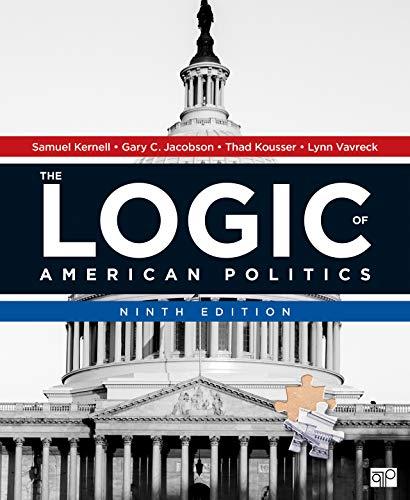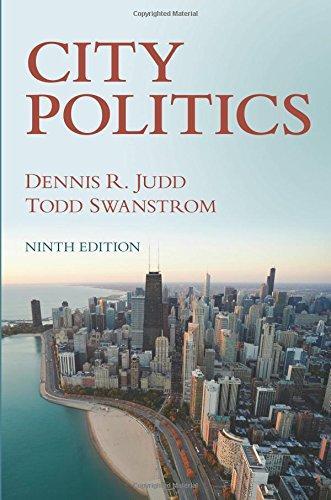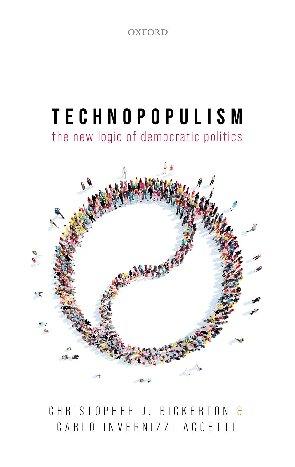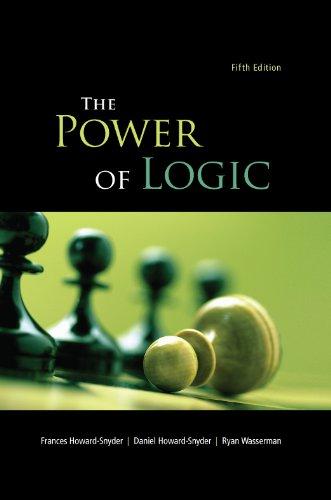https://ebookmass.com/product/etextbook-pdf-forthe-logic-of-american-politics-9th-edition/ Download more ebook from https://ebookmass.com

More products digital (pdf, epub, mobi) instant download maybe you interests ...

The Logic of American Politics 2nd Edition – Ebook PDF
Version https://ebookmass.com/product/the-logic-of-american-politics-2ndedition-ebook-pdf-version/

eBook Online Access for Drugs in American Society 9th Edition, (Ebook PDF)
https://ebookmass.com/product/ebook-online-access-for-drugs-inamerican-society-9th-edition-ebook-pdf/


(eTextbook PDF) for American Urban Politics in a Global Age: The Reader 7th Edition
https://ebookmass.com/product/etextbook-pdf-for-american-urbanpolitics-in-a-global-age-the-reader-7th-edition/ City Politics (9th Edition ) 9th Edition
https://ebookmass.com/product/city-politics-9th-edition-9thedition/

Technopopulism: The New Logic of Democratic Politics
Christopher J. Bickerton
https://ebookmass.com/product/technopopulism-the-new-logic-ofdemocratic-politics-christopher-j-bickerton/

The logic of American nuclear strategy: why strategic superiority matters Kroenig
https://ebookmass.com/product/the-logic-of-american-nuclearstrategy-why-strategic-superiority-matters-kroenig/

Programming Logic & Design, Comprehensive 9th edition Joyce Farrell
https://ebookmass.com/product/programming-logic-designcomprehensive-9th-edition-joyce-farrell/

An American Presidency: Institutional Foundations of Executive Politics – Ebook PDF Version
https://ebookmass.com/product/an-american-presidencyinstitutional-foundations-of-executive-politics-ebook-pdfversion/

The Power of Logic, 5th edition 5th Edition, (Ebook PDF)
https://ebookmass.com/product/the-power-of-logic-5th-edition-5thedition-ebook-pdf/

Brief Contents
1. Preface
2. A Note to Students
3. Chapter 1 • The Logic of American Politics
4. Part I. The Nationalization of Politics
1. Chapter 2 • The Constitution
2. Chapter 3 • Federalism
3. Chapter 4 • Civil Rights
4. Chapter 5 • Civil Liberties
5. Part II. The Institutions of Government
1. Chapter 6 • Congress
2. Chapter 7 • The Presidency
3. Chapter 8 • The Bureaucracy
4. Chapter 9 • The Federal Judiciary
6. Part III. The Public’s Influence on National Policy
1. Chapter 10 • Public Opinion
2. Chapter 11 • Voting, Campaigns, and Elections
3. Chapter 12 • Political Parties
4. Chapter 13 • Interest Groups
5. Chapter 14 • Media
7. Part IV. Conclusion
1. Chapter 15 • Is There a Logic to American Policy?
8. Reference Material
9. Glossary
10. Notes
11. Index
12. About the Authors
Detailed Contents
Preface
A Note to Students
Chapter 1 • The Logic of American Politics
The Importance of Institutional Design
Constitutions and Governments
Authority versus Power
Institutional Durability
The Political System’s Logic
Collective Action Problems
Coordination
The Prisoner’s Dilemma
Logic of Politics: Hobbes on Monarchs
The Costs of Collective Action
Transaction Costs
Conformity Costs
Representative Government
The Work of Government
Politics to Policy: Fire Protection: From a Private to a Public Good
Collective Action and America’s Constitution
Nota Bene
Key Terms
Suggested Readings
Review Questions
Part I: The Nationalization of Politics
Chapter 2 • The Constitution
The Road to Independence
A Legacy of Self-Governance
Dismantling Home Rule
The Continental Congresses
The Declaration of Independence
America’s First Constitution: The Articles of Confederation
The Confederation at War
The Confederation’s Troubled Peace
Drafting a New Constitution
Philosophical Influences
Getting Down to Business
The Virginia and New Jersey Plans
The Great Compromise
Designing the Executive Branch
Logic of Politics: Checks and Balances in the Constitution
Designing the Judicial Branch
Substantive Issues
Politics to Policy: Why Women Were Left Out of the Constitution
Amending the Constitution
Strategy and Choice: Logrolling a Constitution
The Fight for Ratification
The Federalist and Antifederalist Debate
The Influence of The Federalist
The Theory Underlying the Constitution
Federalist No. 10
Federalist No. 51
Designing Institutions for Collective Action: The Framers’
Tool Kit
Command
Veto
Agenda Control
Voting Rules
Delegation
Assessing the Constitution’s Performance in Today’s
American Politics
Key Terms
Suggested Readings
Review Questions
Chapter 3 • Federalism
American-Style Federalism
Evolving Definitions of Federalism
Federalism and the Constitution
Transformation of the Senate
Constitutional Provisions Governing Federalism
Interpreting the Constitution’s Provisions
Strategy and Choice: Chris Christie and an Ambitious Governor’s Dilemma
The Paths to Nationalization
Historic Transfers of Policy to Washington
Nationalization The Solution to States’ Collective Dilemmas
Politics to Policy: Free Federal Dollars? No Thanks, I’ll Take Political Currency Instead
The Political Logic of Nationalization
Strategy and Choice: Maryland Declares Its Political Independence: Partisan Passage of the “Maryland Defense Act”
Modern Federalism
The National Government’s Advantage in the Courts
Preemption Legislation
The Carrot: Federal Grants to the States
Politics to Policy: States’ Rights Meet Reading, Writing, and ’Rithmetic: The Battle over the Common Core
The Stick: Unfunded Mandates
Evolving Federalism: A By-Product of National Policy
Politics to Policy: Who Pays for Government? Comparing State and Federal Tax Burdens
Key Terms
Suggested Readings
Review Questions
Chapter 4 • Civil Rights
What Are Civil Rights?
The Civil Rights of African Americans
The Politics of Black Civil Rights
The Height of Slavery: 1808–1865
Reconstruction: 1865–1877
Strategy and Choice: The Emancipation Proclamation
The Jim Crow Era and Segregation: 1877–1933
Democratic Party Sponsorship of Civil Rights: 1933–1940s
Emergence of a Civil Rights Coalition: 1940s–1950s
The Civil Rights Movement: 1960s
Politics to Policy: The 1964 Civil Rights Act and Integration of Public Schools
Current Civil Rights Policy
The Legacy of the Civil Rights Movement
Equal Rights for Women: The Right to Vote
The Modern History of Women’s Rights
Rights for Hispanics
Gay Rights
Challenging Tyranny
Key Terms
Suggested Readings
Review Questions
Chapter 5 • Civil Liberties
Nationalization of Civil Liberties
The Bill of Rights Checks Majority Rule
Writing Rights and Liberties into the Constitution
The First Ten Amendments
Incorporation via the Fourteenth Amendment
Judicial Interpretation
Major versus Peripheral Rights
Freedom of Speech
Political Protest
Disturbing Speech
Sexually Explicit Expression
Politics to Policy: The Legacy of Brandenberg
Politics to Policy: Corporate Free Speech
Freedom of the Press
Freedom of Religion
Establishment
School Prayer and Bible Reading
Free Exercise
Gun Rights
Criminal Rights
Fourth Amendment: Illegal Searches and Seizures
Fifth Amendment: Self-Incrimination
Sixth Amendment: Right to Counsel and Impartial Jury of Peers
Eighth Amendment: “Cruel and Unusual” Punishment
Privacy
Childbearing Choices
Privacy on the Internet
Civil Liberties as Public Policy
Key Terms
Suggested Readings
Review Questions
Part II: The Institutions of Government
Chapter 6 • Congress
Congress in the Constitution
Powers of Congress
The Electoral System
Congressional Districts
Strategy and Choice: The Republican Gerrymander in 2012
Unequal Representation in the Senate
Congress and Electoral Politics
Candidate-Centered versus Party-Centered Electoral Politics
National Politics in Congressional Elections
Representation versus Responsibility
Who Serves in Congress?
Basic Problems of Legislative Organization
Need for Information
Coordination Problems
Resolving Conflicts
Collective Action
Transaction Costs
Time Pressures
Organizing Congress
The Parties
Increased Partisanship
The Committee Systems
Congressional Staff and Support Groups
Making Laws
Introducing Legislation
Assignment to Committee
Hearings
Reporting a Bill
Logic of Politics: Congressional Investigations
Scheduling Debate
Debate and Amendment
Strategy and Choice: The Origin and Evolution of the Senate Filibuster
The Vote
Reconciling Differences
To the President
A Bias against Action
Evaluating Congress
Key Terms
Suggested Readings
Review Questions
Chapter 7 • The Presidency
The Historical Presidency
The Era of Cabinet Government
Parties and Elections
Strategy and Choice: Lincoln and His Cabinet
The Modern Presidency
The President as Commander in Chief and Head of State
The President as Chief Executive
The President as Legislator
Logic of Politics: The Veto Game
Going Public
The Institutional Presidency
Conclusion
Key Terms
Suggested Readings
Review Questions
Chapter 8 • The Bureaucracy
The Development of the Federal Bureaucracy
Modest Beginnings: The Dilemma of Delegation
The Federalist Years: A Reliance on Respectability
Democratization of the Civil Service: The Spoils System
Civil Service Reform
An Expanding Government
The Cabinet
Noncabinet Agencies
Bureaucracy in Action
Logic of Politics: Insulating the Fed
Logic of Politics: The Deep State Writes an Op-Ed
Bureaucratic Culture and Autonomy
Politics to Policy: Can You Just Get Rid of Bureaucracy? The “Abolish ICE” Movement
Bureaucrats as Politicians
Bureaucratic Infighting
Who Controls the Bureaucracy?
Methods of Congressional Control
The President and the Bureaucracy
The Courts and the Bureaucracy
Iron Triangles, Captured Agencies, and Issue Networks
Strategy and Choice: A Fight with a Bureaucrat Goes Global
Bureaucratic Reform: A Hardy Perennial
The Logic of Red Tape
The Bureaucratic Reward System
Key Terms
Suggested Readings
Review Questions
Chapter 9 • The Federal Judiciary
Setting the Stage for Judicial Review
Three Eras of the Court’s Judicial Review
Nation versus State
Regulating the National Economy
The Rise of Civil Rights and Civil Liberties
A Fourth Era? Reasserting Judicial Review and a Return to States’ Rights
The Structure of the Federal Judiciary
Politics to Policy: Chief Justice Roberts Stands Alone and Puts
His Stamp on the Roberts Court
Jurisdiction of the Federal Courts
The Supreme Court’s Delegation
The Limits of Internal Control
Judicial Decision-Making
Selecting Cases
Doctrine: Policymaking by the Court
Deciding Doctrine
Politics to Policy: Judicial Activism
The Supreme Court’s Place in the Separation of Powers
Absence of Judicial Enforcement
Constitutional and Statutory Control
Department of Justice
Judicial Recruitment
Does a Politicized Judiciary Alter Separation of Powers?
Key Terms
Suggested Readings
Review Questions
Part III: The Public’s Influence on National Policy
Chapter 10 • Public Opinion
What Is Public Opinion?
Measuring Public Opinion
The Origins of Public Opinion
Attitudes
Ideologies
Partisanship
Acquiring Opinions
Information
Framing
Strategy and Choice: Framing Hillary Clinton, Ted Cruz, and Marco Rubio
Is Public Opinion Meaningful?
Stability of Aggregate Public Opinion
Opinion Leadership
The Content of Public Opinion
Consensus on the System
Politicians: A Suspect Class
Public Opinion on Issues
Politics to Policy: Public Opinion and Welfare Reform
Effects of Background on Public Opinion
Race and Ethnicity
Gender
Income and Education
Religion
Other Demographic Divisions
Public Opinion: A Vital Component of American Politics
Key Terms
Suggested Readings
Review Questions
Chapter 11 • Voting, Campaigns, and Elections
The Logic of Elections
The Right to Vote
Wider Suffrage for Men
Suffrage for Women
Suffrage for African Americans and Young Americans Who Uses the Right to Vote?
Individual Factors Affecting Turnout
Institutional Factors Affecting Turnout
Strategy and Choice: Personal Politics: Mobilization
How Do Voters Decide?
Past Performance and Incumbency
Assessing the Issues and Policy Options
Voter Cues and Shortcuts
The Power of Party Identification
Election Campaigns
The Basic Necessities: Candidates and Messages
Strategy and Choice: To Run or Not to Run
The Other Necessity: Campaign Money
Politics to Policy: Soft Money Finds a New Home
The Logic of Elections Revisited
Key Terms
Suggested Readings
Review Questions
Chapter 12 • Political Parties
The Constitution’s Unwanted Offspring
Incentives for Party Building
Basic Features of the Party System
Logic of Politics: Third-Party Blues
Development and Evolution of the Party Systems
The First Party System: The Origin of American Parties
The Second Party System: Organizational Innovation
The Third Party System: Entrepreneurial Politics
The Fourth Party System: Republican Ascendancy
The Fifth Party System: The New Deal Coalition
Revival of the Parties: A Sixth Party System?
Partisanship Endures
Party Differences
Changes in the Party Coalitions
Modern Party Organizations
Expediency Persists
Key Terms
Suggested
Readings
Review Questions
Chapter 13 • Interest Groups
The Logic of Lobbying
The Origins of Interest Group Politics in the United States
The Pluralist Defense of Interest Groups
Politics to Policy: High School Students Turned Gun Control
Lobbyists: An Interest Group Born from a Mass Shooting
Vows #NeverAgain
The Problem of Collective Action
Logic of Politics: The Political Power of Small Numbers
Contemporary Interest Groups
Why Have Interest Groups Proliferated?
Fragmentation and Specialization
What Do Interest Groups Do?
Insider Tactics: Trafficking in Information and Cultivating Access
Strategy and Choice: Why Spend Millions on Lobbying?
Because It Is Worth Billions
Outsider Tactics: Altering the Political Forces
Litigation
Strategy and Choice: Lobbying with a Social Network
Electoral Politics and Political Action Committees
Logic of Politics: Labor Unions, Free Riding, and the Fees
that Fund Political Power
Interest Group Politics: Controversial and Thriving
Key Terms
Suggested Readings
Review Questions
Chapter 14 • Media
Development of the News Business
The Economics of Early Newspapers
Rise of the Penny Press
Emergence of Radio and Television
The Digital Revolution: Internet and Mobile
Strategy and Choice: Wi-Fi Brings Sectors Together to Solve
Coordination Problems
A Tragedy of the Commons: Broadcast Technology Introduces Regulation
An Ever-Changing News Media
Legacy News as a Consumer Product: How the News Gets “Made”
Legacy News Producers: Reporters and Their News
Organizations
Strategy and Choice: The Military’s Media Strategy
How Legacy News Is Produced: Content and Form How News on Social Media Is Generated
Limits on the Media
Demand for and Effects of News
Where People Get Their News
How the Media Influence Citizens
News Media as the “Fourth Branch”
Politician–Press Relations Then and Now
Strategy and Choice: The Shrinking Presidential Sound Bite: A Tweet!
Key Terms
Suggested Readings
Review Questions
Part IV: Conclusion
Chapter 15 • Is There a Logic to American Policy?
Free Riding and Health Care
The Obstacles to Taking Domestic Action to Stop Global Climate Change
High-Stakes Maneuvering: Why We Tiptoe up to, but Have Not Fallen off, the Fiscal Cliff
Logic of Politics: #Grubergate and the Perils of Making Free Riders Pay Up
The Prisoner’s Dilemma of Entitlement Reform
The Success and Failure of Collective Action: A Tale of Two Tax Reforms
Logic of Politics: The Structure of Government and AntiTobacco Laws
Strategy and Choice: Saying No to Getting to Yes: Why an Immigration Deal Has Proven Elusive
Conclusion
Key Terms
Suggested Readings
Review Questions
Reference Material
Glossary
Notes
Index
About the Authors
Preface
Donald Trump’s election and his first two years in office seem only to point out the illogic of American politics. Since writing this book’s last edition, shortly after the 2016 election, America’s politics has been in continuous tumult. The question we confront as we take the Trump presidency into account asks, does Donald Trump’s election and first two years in office break the mold, requiring us to rethink Logic’s approach to the systematic forces and processes that govern the play of politics in Washington and across the nation? Perhaps not. The tumultuous events might represent the proverbial “exception that proves the rule.” If the latter, Trump’s election and presidency would allow us to glean new insights into American politics in other political actors’ responses to Trump’s unconventional behavior. Answering this question lies at the heart of this revision.
Obviously, assessment of the extraordinary 2016 election and the 2018 midterms are major topics of Chapter 11’s coverage of voting and elections, and sizing up Trump’s first two years in office occupies much of the attention of Chapter 7 on the presidency. In both we seek to square the Trump years with the stable systematic forces at work in both arenas. But this question pervades every other chapter as well. We close Chapter 2 (“The Constitution”) by considering the proliferation of contentious separation of powers issues that in some instances preceded the Trump presidency but that his policies have made more salient and problematic. Chapter 3’s coverage of federalism introduces the Democratic and Republican cadres of state attorneys general signed on to lawsuits challenging or supporting administration policies according to their partisan alignment with the president. Chapter 4 reports on the ongoing tribulations over the still unresolved Deferred Action for Childhood Arrivals (DACA) policy affecting several hundred thousand children brought into the country illegally. With Republicans controlling both chambers of the 115th Congress and Trump in the White House, the Republicans were poised to fulfill their dream of repealing Obamacare; Chapter 6 explains why they could not.
We learn in Chapter 8 just how extensive presidents’ administrative
Another random document with no related content on Scribd:
This eBook is for the use of anyone anywhere in the United States and most other parts of the world at no cost and with almost no restrictions whatsoever. You may copy it, give it away or re-use it under the terms of the Project Gutenberg License included with this eBook or online at www.gutenberg.org. If you are not located in the United States, you will have to check the laws of the country where you are located before using this eBook.
1.E.2. If an individual Project Gutenberg™ electronic work is derived from texts not protected by U.S. copyright law (does not contain a notice indicating that it is posted with permission of the copyright holder), the work can be copied and distributed to anyone in the United States without paying any fees or charges. If you are redistributing or providing access to a work with the phrase “Project Gutenberg” associated with or appearing on the work, you must comply either with the requirements of paragraphs 1.E.1 through 1.E.7 or obtain permission for the use of the work and the Project Gutenberg™ trademark as set forth in paragraphs 1.E.8 or 1.E.9.
1.E.3. If an individual Project Gutenberg™ electronic work is posted with the permission of the copyright holder, your use and distribution must comply with both paragraphs 1.E.1 through 1.E.7 and any additional terms imposed by the copyright holder. Additional terms will be linked to the Project Gutenberg™ License for all works posted with the permission of the copyright holder found at the beginning of this work.
1.E.4. Do not unlink or detach or remove the full Project Gutenberg™ License terms from this work, or any files containing a part of this work or any other work associated with Project Gutenberg™.
1.E.5. Do not copy, display, perform, distribute or redistribute this electronic work, or any part of this electronic work, without prominently displaying the sentence set forth in paragraph 1.E.1
with active links or immediate access to the full terms of the Project Gutenberg™ License.
1.E.6. You may convert to and distribute this work in any binary, compressed, marked up, nonproprietary or proprietary form, including any word processing or hypertext form. However, if you provide access to or distribute copies of a Project Gutenberg™ work in a format other than “Plain Vanilla ASCII” or other format used in the official version posted on the official Project Gutenberg™ website (www.gutenberg.org), you must, at no additional cost, fee or expense to the user, provide a copy, a means of exporting a copy, or a means of obtaining a copy upon request, of the work in its original “Plain Vanilla ASCII” or other form. Any alternate format must include the full Project Gutenberg™ License as specified in paragraph 1.E.1.
1.E.7. Do not charge a fee for access to, viewing, displaying, performing, copying or distributing any Project Gutenberg™ works unless you comply with paragraph 1.E.8 or 1.E.9.
1.E.8. You may charge a reasonable fee for copies of or providing access to or distributing Project Gutenberg™ electronic works provided that:
• You pay a royalty fee of 20% of the gross profits you derive from the use of Project Gutenberg™ works calculated using the method you already use to calculate your applicable taxes. The fee is owed to the owner of the Project Gutenberg™ trademark, but he has agreed to donate royalties under this paragraph to the Project Gutenberg Literary Archive Foundation. Royalty payments must be paid within 60 days following each date on which you prepare (or are legally required to prepare) your periodic tax returns. Royalty payments should be clearly marked as such and sent to the Project Gutenberg Literary Archive Foundation at the address specified in Section 4, “Information
about donations to the Project Gutenberg Literary Archive Foundation.”
• You provide a full refund of any money paid by a user who notifies you in writing (or by e-mail) within 30 days of receipt that s/he does not agree to the terms of the full Project Gutenberg™ License. You must require such a user to return or destroy all copies of the works possessed in a physical medium and discontinue all use of and all access to other copies of Project Gutenberg™ works.
• You provide, in accordance with paragraph 1.F.3, a full refund of any money paid for a work or a replacement copy, if a defect in the electronic work is discovered and reported to you within 90 days of receipt of the work.
• You comply with all other terms of this agreement for free distribution of Project Gutenberg™ works.
1.E.9. If you wish to charge a fee or distribute a Project Gutenberg™ electronic work or group of works on different terms than are set forth in this agreement, you must obtain permission in writing from the Project Gutenberg Literary Archive Foundation, the manager of the Project Gutenberg™ trademark. Contact the Foundation as set forth in Section 3 below.
1.F.
1.F.1. Project Gutenberg volunteers and employees expend considerable effort to identify, do copyright research on, transcribe and proofread works not protected by U.S. copyright law in creating the Project Gutenberg™ collection. Despite these efforts, Project Gutenberg™ electronic works, and the medium on which they may be stored, may contain “Defects,” such as, but not limited to, incomplete, inaccurate or corrupt data, transcription errors, a copyright or other intellectual property infringement, a defective or
damaged disk or other medium, a computer virus, or computer codes that damage or cannot be read by your equipment.
1.F.2. LIMITED WARRANTY, DISCLAIMER OF DAMAGES - Except for the “Right of Replacement or Refund” described in paragraph 1.F.3, the Project Gutenberg Literary Archive Foundation, the owner of the Project Gutenberg™ trademark, and any other party distributing a Project Gutenberg™ electronic work under this agreement, disclaim all liability to you for damages, costs and expenses, including legal fees. YOU AGREE THAT YOU HAVE NO REMEDIES FOR NEGLIGENCE, STRICT LIABILITY, BREACH OF WARRANTY OR BREACH OF CONTRACT EXCEPT THOSE PROVIDED IN PARAGRAPH
1.F.3. YOU AGREE THAT THE FOUNDATION, THE TRADEMARK OWNER, AND ANY DISTRIBUTOR UNDER THIS AGREEMENT WILL NOT BE LIABLE TO YOU FOR ACTUAL, DIRECT, INDIRECT, CONSEQUENTIAL, PUNITIVE OR INCIDENTAL DAMAGES EVEN IF YOU GIVE NOTICE OF THE POSSIBILITY OF SUCH DAMAGE.
1.F.3. LIMITED RIGHT OF REPLACEMENT OR REFUND - If you discover a defect in this electronic work within 90 days of receiving it, you can receive a refund of the money (if any) you paid for it by sending a written explanation to the person you received the work from. If you received the work on a physical medium, you must return the medium with your written explanation. The person or entity that provided you with the defective work may elect to provide a replacement copy in lieu of a refund. If you received the work electronically, the person or entity providing it to you may choose to give you a second opportunity to receive the work electronically in lieu of a refund. If the second copy is also defective, you may demand a refund in writing without further opportunities to fix the problem.
1.F.4. Except for the limited right of replacement or refund set forth in paragraph 1.F.3, this work is provided to you ‘AS-IS’, WITH NO OTHER WARRANTIES OF ANY KIND, EXPRESS OR IMPLIED,
INCLUDING BUT NOT LIMITED TO WARRANTIES OF MERCHANTABILITY OR FITNESS FOR ANY PURPOSE.
1.F.5. Some states do not allow disclaimers of certain implied warranties or the exclusion or limitation of certain types of damages. If any disclaimer or limitation set forth in this agreement violates the law of the state applicable to this agreement, the agreement shall be interpreted to make the maximum disclaimer or limitation permitted by the applicable state law. The invalidity or unenforceability of any provision of this agreement shall not void the remaining provisions.
1.F.6. INDEMNITY - You agree to indemnify and hold the Foundation, the trademark owner, any agent or employee of the Foundation, anyone providing copies of Project Gutenberg™ electronic works in accordance with this agreement, and any volunteers associated with the production, promotion and distribution of Project Gutenberg™ electronic works, harmless from all liability, costs and expenses, including legal fees, that arise directly or indirectly from any of the following which you do or cause to occur: (a) distribution of this or any Project Gutenberg™ work, (b) alteration, modification, or additions or deletions to any Project Gutenberg™ work, and (c) any Defect you cause.
Section 2. Information about the Mission of Project Gutenberg™
Project Gutenberg™ is synonymous with the free distribution of electronic works in formats readable by the widest variety of computers including obsolete, old, middle-aged and new computers. It exists because of the efforts of hundreds of volunteers and donations from people in all walks of life.
Volunteers and financial support to provide volunteers with the assistance they need are critical to reaching Project Gutenberg™’s goals and ensuring that the Project Gutenberg™ collection will
remain freely available for generations to come. In 2001, the Project Gutenberg Literary Archive Foundation was created to provide a secure and permanent future for Project Gutenberg™ and future generations. To learn more about the Project Gutenberg Literary Archive Foundation and how your efforts and donations can help, see Sections 3 and 4 and the Foundation information page at www.gutenberg.org.
Section 3. Information about the Project Gutenberg Literary Archive Foundation
The Project Gutenberg Literary Archive Foundation is a non-profit 501(c)(3) educational corporation organized under the laws of the state of Mississippi and granted tax exempt status by the Internal Revenue Service. The Foundation’s EIN or federal tax identification number is 64-6221541. Contributions to the Project Gutenberg Literary Archive Foundation are tax deductible to the full extent permitted by U.S. federal laws and your state’s laws.
The Foundation’s business office is located at 809 North 1500 West, Salt Lake City, UT 84116, (801) 596-1887. Email contact links and up to date contact information can be found at the Foundation’s website and official page at www.gutenberg.org/contact
Section 4. Information about Donations to the Project Gutenberg Literary Archive Foundation
Project Gutenberg™ depends upon and cannot survive without widespread public support and donations to carry out its mission of increasing the number of public domain and licensed works that can be freely distributed in machine-readable form accessible by the widest array of equipment including outdated equipment. Many
small donations ($1 to $5,000) are particularly important to maintaining tax exempt status with the IRS.
The Foundation is committed to complying with the laws regulating charities and charitable donations in all 50 states of the United States. Compliance requirements are not uniform and it takes a considerable effort, much paperwork and many fees to meet and keep up with these requirements. We do not solicit donations in locations where we have not received written confirmation of compliance. To SEND DONATIONS or determine the status of compliance for any particular state visit www.gutenberg.org/donate.
While we cannot and do not solicit contributions from states where we have not met the solicitation requirements, we know of no prohibition against accepting unsolicited donations from donors in such states who approach us with offers to donate.
International donations are gratefully accepted, but we cannot make any statements concerning tax treatment of donations received from outside the United States. U.S. laws alone swamp our small staff.
Please check the Project Gutenberg web pages for current donation methods and addresses. Donations are accepted in a number of other ways including checks, online payments and credit card donations. To donate, please visit: www.gutenberg.org/donate.
Section 5. General Information About Project Gutenberg™ electronic works
Professor Michael S. Hart was the originator of the Project Gutenberg™ concept of a library of electronic works that could be freely shared with anyone. For forty years, he produced and distributed Project Gutenberg™ eBooks with only a loose network of volunteer support.
Project Gutenberg™ eBooks are often created from several printed editions, all of which are confirmed as not protected by copyright in the U.S. unless a copyright notice is included. Thus, we do not necessarily keep eBooks in compliance with any particular paper edition.
Most people start at our website which has the main PG search facility: www.gutenberg.org.
This website includes information about Project Gutenberg™, including how to make donations to the Project Gutenberg Literary Archive Foundation, how to help produce our new eBooks, and how to subscribe to our email newsletter to hear about new eBooks.
